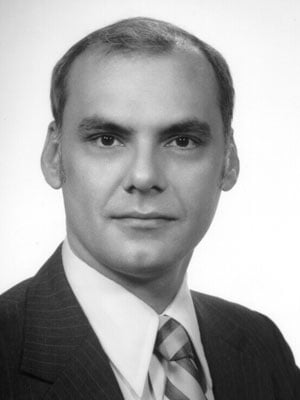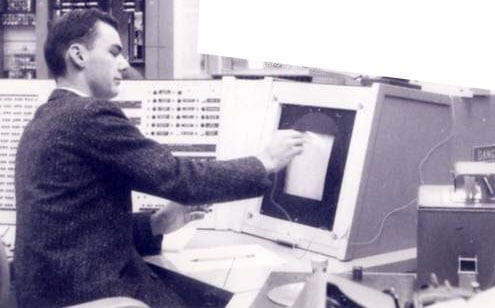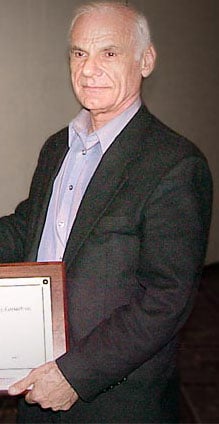
Who Was Larry Roberts?
Larry (Lawrence) Roberts is known as the father of computer vision for his contributions to the field and to the creation of the modern internet. Roberts is one of the founders of the creation of modern computers and the internet, having served as the first program manager for ARPANET, or the Advanced Research Projects Agency Network. After leaving ARPANet, Robert’s contributions continued in the commercial sector, where Roberts worked to continue to expand on the internet’s technological promise.
Early Life
Lawrence Roberts was born and raised in Westport, Connecticut, in 1937. His parents, Elliot & Elizabeth Roberts, both held doctorates in chemistry from Yale University.
From the time Roberts was a young boy he expressed a desire to become a scientist and showed unique prowess with mechanical and electrical engineering, apparently spending much of his free time building items like televisions and telephone networks.
As a child, Roberts noted that he was involved in the construction and design of many items, talents that were spurned by his own natural scientific curiosity. He played with chemistry sets, built elevators, and played extensively with chemistry. All of this resulted in multiple injuries for a young Roberts: He was hospitalized numerous times as a result of his scientific experimentation.
Roberts’ talent continued to manifest as he grew older, and in 1963, he graduated from MIT with a Ph.D. in electrical engineering. It was during this time that Roberts continued to expand on his interest and work in computers and express an interest in becoming a computer scientist. He worked at MIT until 1967, when he was recruited to work at ARPA, serving as a program manager. There, Robert’s expanded his interest in computers to eventually become one of the most influential computer scientists in history.

Career
ARPANet
It is important to note that Dr. Roberts was originally reluctant to work for ARPAnet, a military program that was designed to expand upon potential uses of computer systems and networked computers. However, Roberts was recruited based on his interest in the project.
Roberts pushed ARPA to not only advance the idea of a distributed network and packet switching but helped to create the building blocks of many common features of today’s internet. For example, it was Roberts who first developed the idea behind electronic mail, helping to create the protocols that allowed for the sending of emails that we still use today.
Roberts would stay at ARPA for six years before moving on to other business pursuits.
Other Business Ventures
In addition to his extensive contribution to the internet, Dr. Roberts achieved a great deal of success in the commercial sector. He left ARPA in 1973 and ultimately worked or founded with six different companies that dealt with the internet or computer networking. These companies all built on Roberts’s success and expertise in the arena of internet connectivity and networking, with some improvement on his original concept of packet switching.
Robert’s first business start-up was Telenet, a company that was founded by Roberts in order to advance his own vision of network connectivity. With Telenet, Roberts founded the first packet data communications company. That company would develop the first data protocol that was widely adopted by governmental and commercial computers alike. Roberts would remain at Telenet until 1980, a year after selling the company.
Roberts also served as President of the DHL Corporation from 1983. From 1983-1993, he served as the CEO and Chairman of NetExpress, another electronics company. From 1993-1998, Roberts served as President of ATM Systems. In 1999, Roberts founded Caspian Systems, a company that built advanced internet routers that sought to improve connectivity. Roberts was ultimately successful in this pursuit, although he left Caspian in 2004 to further this vision. As a result, Roberts founded Anagran in 1999. There, he designed a new system of “flow management,” the concept by which packet switches were lined up internally for processing. This process could be done at significantly reduced power and router size, thus making the new routers much more commercially viable.
All of these companies worked, in some way, on Roberts passion: Electronics and communications improvements. During this time, Roberts was involved in an array of technological advances that continued to promulgate his original vision of communications advancements.
What Did Larry Roberts Create?
The Modern Internet
Roberts is considered one of the fathers of the modern internet, but he was heavily influenced by the work of two of his predecessors. Dr. Leonard Kleinrock was another computer scientist who had also done extensive work on the theoretical underpinnings of what we now know as the modern internet. Indeed, it was Dr. Kleinrock’s work that set the stage for the creation of packet switching. Furthermore, Roberts was heavily influenced by the works of Dr. J.C.R. Licklider, whose position at ARPANET Roberts would eventually take. Licklider was the one who first developed the idea of a network of wired computers that would be able to communicate with each other.
3D information from 2D Drawings
Even before his time at ARPA, Roberts was involved in revolutionary computer tactics. He noted that the use of computers, cameras, and appropriate programming – including the way in which the human mind tends to examine and understand drawings – that computers could eventually be utilized to take 2D photographs and use them for the purposes of creating and understanding 3D images [6]. This formed the foundation for computer vision, and this computer vision was ultimately a building block for an array of 2D to 3D conversions and lead to the rapidly expanding universe of virtual reality.
Packet Switching
While working on ARPA, Roberts helped to invent numerous functions that are still vital to the internet today. Most prominent among them is packet switching. Packet switching is the process by which data is broken down into specific blocks – or pockets – in a computer network. It is then reassembled in another place along the same network. Packet switching is the core of the modern internet: It allows for data to be assembled and then reassembled along a network. As ARPA was the forerunner for the modern internet, the gains that Roberts made here proved critical towards the creation of not only ARPA but the internet we all know and enjoy today.
Distributed Control
Roberts was also responsible for distributed control, which is one of the foundational principles behind the operations of the internet. Roberts didn’t come up with this idea alone, as he was the first to admit: The idea was first suggested to him by Wesley Clark, the man who created the LINC computer. After an ARPA meeting, Clark suggested that Roberts use multiple computers at a location in order to handle the way in which the computers networked with each other. Doing so would better enhance the communication between the computers. All of this ultimately turned into the distributed control that remains a bedrock principle of the internet today. Indeed, it was Clark’s suggestion to Roberts that turned Roberts away from the idea of having a host computer handle connectivity issues, and towards the idea of a distributed network.
Satellite Connections
Roberts is also the first to suggest the use of satellite networks in order to connect computer networks. He first made this suggestion in 1970 when discussing the idea with the National Physics Laboratory, specifically suggesting that NPL and ARPA use satellite connections to connect their computer networks. The idea did not come to fruition, as it was technologically infeasible at the time. However, it would be implemented years later, and Roberts is the one who first developed the concept behind the idea.
Larry Roberts: Marriage, Divorce, Children, and Personal Life
Net Worth
In his obituary, it was noted that Dr. Roberts never saw any of the spikes in his overall net worth that was created from the internet, and certainly failed to generate the massive increase to his net worth that is so common among numerous other technological entrepreneurs. His net worth is not known, but in 2018, the year that he died, Dr. Roberts was noted to be living in a “modest” California home that he shared with Dr. Rinker.
Marriage
In his personal life, Roberts was married four times. His first wife was June Stuller, who, like Roberts, worked in computers. Roberts and Stuller divorced in 1974 after 14 years of marriage. This was Roberts’ longest marriage, as his other three marriages also ended in divorce.
At the time of his death, Roberts was noted to be in a relationship with his partner, Dr. Tedde Rinker.
Children
Roberts had two children: His sons Pasha and Kenny. Roberts also had two sisters, Ruth Esther Bennet and Mary Annis Arris, who survived him.
Death
Lawrence Roberts died in 2018 at the age of 81. He died of a heart attack in his home in Redwood City, California.
Tragedy
Lawrence Roberts was predeceased by his son, Kenny, who died in 2013.
Dr. Lawrence Roberts: Awards and Achievements
Over the course of his illustrious career, Dr. Roberts won many awards. Incidentally, these awards are very broad in industry and include many sectors, including communications, engineering, computing, and more.

IEEE Computer Pioneer Award
The IIEE Computer Pioneer Award is given to people who had a major impact on the computing industry as a whole. The award was created in 1981, and Dr. Roberts was one of the first recipients of the award.
Charles Stark Draper Prize
The Charles Stark Draper Prize is given to individuals who have made major contributions to the advancement of the engineering field. Dr. Roberts won this award in 2001.
Association for Computing Machinery SIGCOMM Communications Award
This award is given to individuals as a lifetime achievement award and meant to honor those who had a major impact on the development of communications networks.
Harry Goode Memorial Award
The Harry Goode Memorial Award is given from the IEEE Computer Society, along with a $2,000 cash prize. It is given to individuals for contributions to any number of fields, including theory, design, or computer technique. Dr. Roberts won this prestigious award in 1976.
International Engineering Consortium Fellow
This award is given to individuals who are known for their pioneering impact in the information industry as a whole.
Dr. Lawrence Roberts: Published Works and Books
Dr. Roberts authored many scientific papers, including The Evolution of Packet Switching (December 1978, Proceedings of the IIEE). However, he did not author any books.